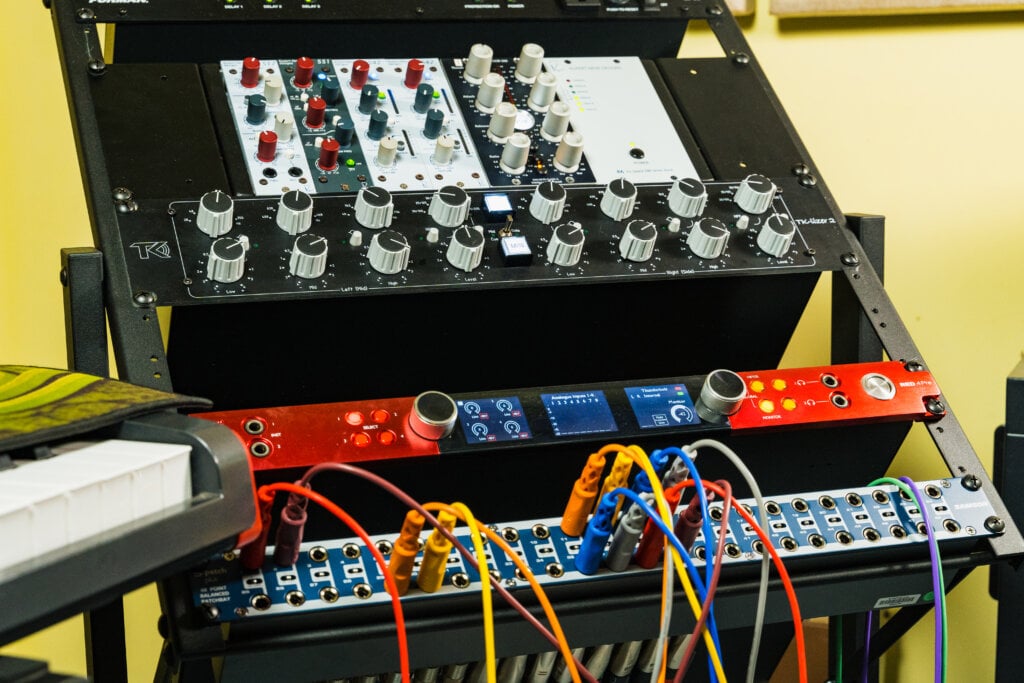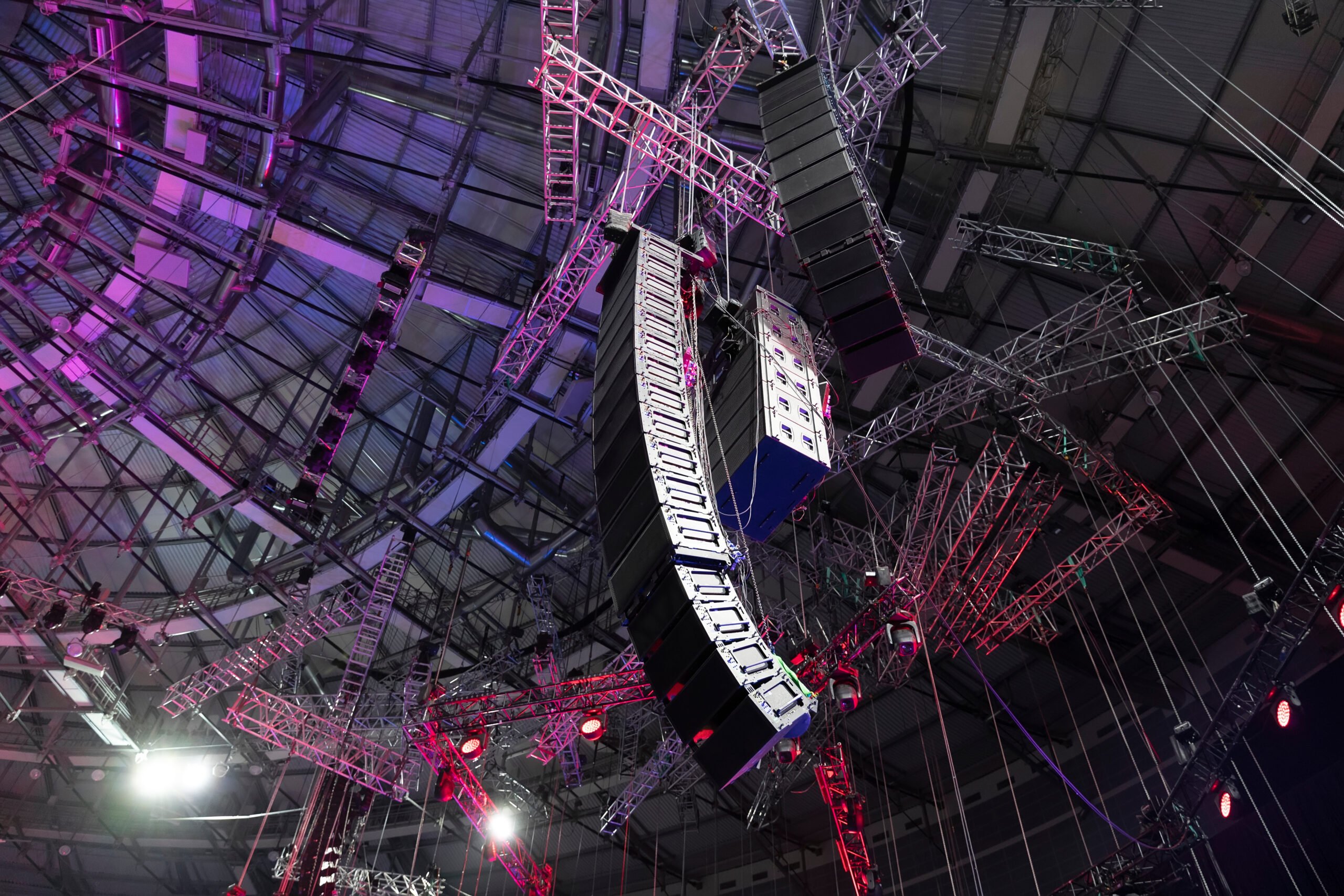Do you want to start recording your own music? Perhaps you’re looking to improve the sound quality of your live events? In either case, you’ll need to know about audio mixers and audio interfaces. These two devices play different but important roles in the world of audio recording and reproduction. In this article, we’ll describe what each one is and what it’s used for. With this information, you can make an informed decision about what gear is best for your needs!
What is an Audio Mixer?
An audio mixer is a device that takes multiple audio signals and combines them into one or more output signal. These input signals can come from microphones, instruments, tape decks, CD players, computers, or other mixers. The outputs of the mixer can be sent to amplifiers, recording devices, or loudspeakers.
The most basic mixers have only two channels (left and right), but more sophisticated models may have four, 16, or even up to 96 channels. Each channel has its own volume control so that the sound level of each input signal can be adjusted independently of the others.
In addition to the volume controls, each channel also has EQ controls (for equalization) and effects controls. The EQ controls allow you to boost or cut the low, middle, and high frequencies of each channel independently of the others. The effects controls allow you to add reverb or other effects to each channel.
The term “mixer” can refer to either hardware or software, although in this article we’ll be focusing on hardware mixers. Mixers are used in a wide variety of settings, from live music venues to recording studios to radio stations.
There are two main types of audio mixers: digital and analog. Analog mixers are the older technology, and they use physical controls to adjust the level of each input signal. Digital mixers are newer, and they use digital processing to combine the signals. While digital mixers are growing more popular, some industry pros have stuck with analog ones.
Digital Audio Mixers vs. Analog Audio Mixers
Digital audio mixers are becoming the standard for the pro audio industry due to their clear benefits over other analog audio mixers.
For instance, digital mixers generally have a number of features that analog ones do not, such as the ability to save and recall settings, the ability to connect to a computer for further processing of the signal, and access to a ton of built-in effects which would be difficult to fit in an analog mixer.
Most importantly, digital mixers tend to be much more compact than analog mixers. They can fit many more channels in a more compact console, increasing their portability for touring shows and freeing up floor space in your studio.
However, digital audio mixers also tend to be much more expensive than their analog counterparts. Plus, for beginners, analog mixers are generally easier to use because each button or knob only has one function. On digital mixers, each button or knob can be set to control several different things.
Lastly, we have to mention that some professionals prefer the sound of analog mixers over digital ones, saying that the analog ones sound “purer”–but this is likely just a matter of opinion or nostalgia rather than scientific fact.
Live audio mixers
In live sound reinforcement, mixers are used to provide an accurate reproduction of the sound of the instruments and voices on stage.
If you’re running a live event, such as a concert or a play, you’ll need a mixer that can handle the appropriate number of input signals for your stage, each input signal being a microphone or instrument. For example, a small club might only need a 16-channel mixer (i.e. only use up to 16 microphones and instruments), while a large stadium might need a 96-channel mixer (up to 96 of them).
Audio mixers for studio recording
If you’re recording in a studio, you’ll also need a mixer to combine and balance the various audio signals. Then, you can route the combined signal to a recorder or computer with a DAW (Digital Audio Workstation) like Pro Tools, Logic Pro, Presonus Studio One, etc. Oftentimes a digital mixer will integrate with your DAW, allowing you to control the software entirely from your mixer.
Like with live sound applications, the number of channels you need will depend on how many instruments or voices you’re recording at the same time.
For example, if you’re only recording a single singer with a guitar, then you might only need a small four-channel mixer (one for the microphone, one for the guitar). But if you’re recording a full band with drums, bass, guitars, keyboards, and vocals, then you’ll likely need at least 16 channels.
When it comes to mixers, there’s no one-size-fits-all answer. The type of mixer you need will depend on the specific application you’re using it for.
What is an Audio Interface?
An audio interface is a device that connects microphones, instruments, and other sound sources to a computer or mobile device. It converts the analog signals of these sources into digital audio that can be recorded, edited, and mixed on a computer.
Audio interfaces come in all shapes and sizes, from simple USB devices designed for laptop recording to high-end rackmount units with multiple inputs and outputs. The type of audio interface you need will depend on your specific needs as a musician or producer.
If you’re just starting out, a simple two-input/two-output USB audio interface for your PC or Mac will suffice. But if you’re looking to record a full band, you’ll need something with more inputs (and possibly more advanced features like phantom power).
When shopping for an audio interface, you’ll want to consider the number of inputs and outputs you need, the sample rate and bit depth (more on that later), as well as any additional features that might be useful.
As with most things in the world of music production, there is no one-size-fits-all answer when it comes to audio interfaces. The best way to figure out which interface is right for you is to assess your needs and then do some research to find the best audio interface within your budget.
On that note, let’s talk about the two common types of audio interfaces: USB audio interfaces and thunderbolt/firewire audio interfaces.
USB Audio Interfaces
One of the most popular types of audio interfaces is the USB audio interface. These devices connect to a computer via USB and typically offer a limited number of inputs and outputs.
USB devices are perfect for laptop recording and are often very affordable, making them a great option for beginner producers and musicians. However, they may not have enough inputs and outputs for more advanced applications like recording a full band in a studio.
Thunderbolt and Firewire Audio Interfaces
Thunderbolt and Firewire are two types of high-speed data connections that are commonly used in audio interfaces. These connections offer much higher bandwidth than USB, which means they can handle more data (and more channels) at a time.
Thunderbolt and Firewire audio interfaces are typically more expensive than their USB counterparts, but they offer a significant increase in performance. If you’re looking for an interface with a large number of inputs and outputs, then Thunderbolt or Firewire is the way to go.
Mixer vs. Audio Interface
It’s important to note that an audio interface is not the same thing as a mixer. A mixer is a device that combines multiple audio signals and adjusts their level, tone, and other properties. An audio interface, on the other hand, is designed to connect those audio signals to a computer (or mobile device) so they can be recorded, edited, and mixed in software.
While some mixers also function as audio interfaces (and vice versa), these two devices serve different purposes and are typically used for different applications. For example, if you’re running a live sound reinforcement system, you’ll need a mixer to combine and control the various sound sources on stage. But if you’re recording in a studio, you’ll need an audio interface to connect those same sources to your computer so you can record them.
Can you use a mixer as an audio interface?
Yes, in some cases. Some mixers have built-in audio interfaces that allow them to be connected directly to a computer. However, not all mixers have this feature, and the ones that do often require special drivers or software to function as an interface.
It’s also worth noting that most mixer-interfaces are designed for live sound applications and may not offer the same level of performance or features as a dedicated audio interface. So if you’re looking for an interface for recording in the studio, it’s generally best to stick with a dedicated device.
How do you use a USB mixer as an audio interface?
To use a USB mixer as an audio interface, you’ll need to connect it to your computer using a USB cable. The specific steps will vary depending on the mixer and the software you’re using, but in general, you’ll need to configure your software to recognize the mixer as an audio input device.
Once that’s done, you can route the various audio signals from your mixer into your computer so they can be recorded or processed in software.
Should you use a mixer or audio interface?
The answer to this question depends on your specific needs. If you’re looking for a device to control multiple audio sources in a live setting, then a mixer is the way to go.
But if you need to connect those same sources to a computer for recording or processing, then an audio interface is the better choice. Of course, there are also devices that combine both functions into one unit, so it’s always worth doing some research to find the best option for your particular situation.
No matter what type of audio interface you choose, make sure it has the right number of inputs and outputs for your needs. And if you’re unsure about which model to get, don’t hesitate to reach out to Gearsupply for advice. With a little bit of help, you should be able to find the perfect audio interface for your needs.
Plus, if you’re in need of affordable audio equipment, check out Gearsupply’s used audio mixers for sale here.



